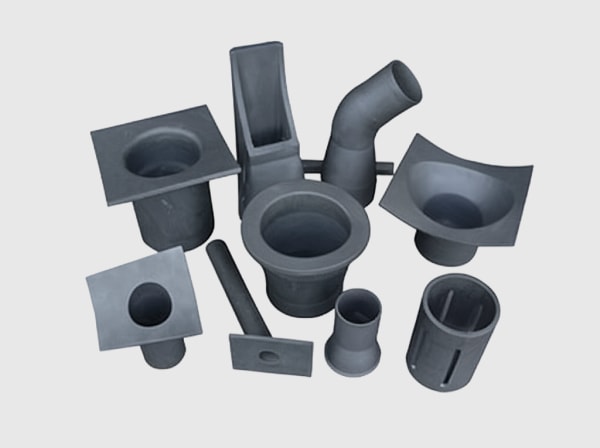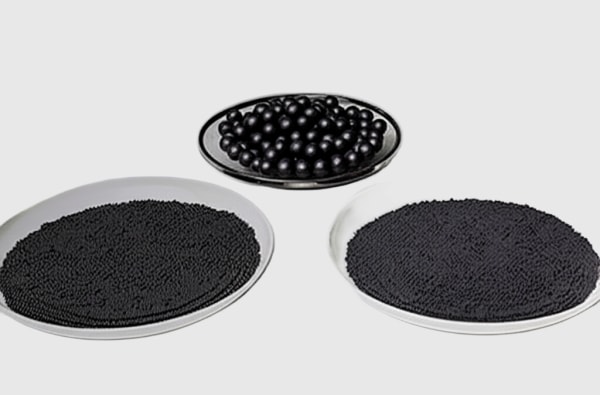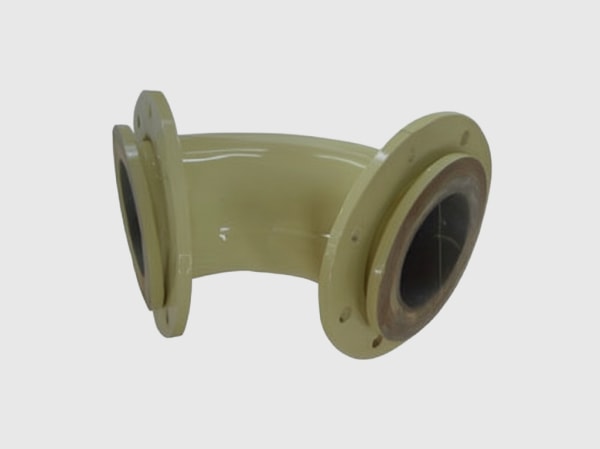Chile: A Hub for Custom SiC Manufacturing
In today’s demanding industrial landscape, the need for materials that can withstand extreme conditions is paramount. From the intricate world of semiconductor manufacturing to the harsh environments of aerospace and energy, custom silicon carbide (SiC) products are emerging as indispensable solutions. This blog post delves into the world of custom SiC, exploring its unique properties, diverse applications, and the considerations for sourcing high-quality components.
The Indispensable Role of Custom SiC Products
Custom silicon carbide products are advanced technical ceramics renowned for their exceptional properties, making them essential in high-performance industrial applications. Unlike standard materials, custom SiC components are tailored to precise specifications, optimizing their performance for specific operational demands. Their unmatched thermal resistance, superior hardness, and excellent chemical inertness make them ideal for environments where conventional materials would fail.
Main Applications of Silicon Carbide Across Industries
The versatility of silicon carbide allows it to be employed across a vast array of industries, driving innovation and enhancing reliability. Its unique combination of properties makes it a material of choice for critical components:
- Semiconductors: SiC is vital for wafer processing equipment, furnace components, and etching tools due to its purity and high temperature stability.
- Automotive: Used in power electronics for electric vehicles (EVs), braking systems, and high-temperature engine components, improving efficiency and durability.
- Aerospace: Critical for jet engine components, heat exchangers, and structural parts in high-temperature environments, offering lightweight strength and thermal resilience.
- Power Electronics: Enabling high-voltage, high-frequency power devices for inverters, converters, and power modules, leading to more compact and efficient systems.
- Renewable Energy: Essential in solar inverters, wind turbine components, and energy storage systems, enhancing efficiency and extending lifespan.
- Metallurgy: Applied in furnace linings, crucibles, and high-temperature rollers due to its extreme heat resistance and non-wetting properties.
- Defense: Utilized in lightweight armor, protective ceramics, and high-performance optical systems for demanding military applications.
- Chemical Processing: Ideal for pump seals, valve components, and heat exchangers in corrosive environments due to its chemical inertness.
- LED Manufacturing: Used as substrates for high-brightness LEDs, improving light output and thermal management.
- Industrial Machinery: Employed in bearings, seals, nozzles, and wear parts for abrasive and high-temperature industrial processes.
- Telecommunications: Critical for high-frequency filters, heat sinks, and optical components in advanced communication systems.
- Oil and Gas: Used in downhole tools, pumps, and valves for harsh, abrasive, and corrosive oil and gas extraction environments.
- Medical Devices: Applied in surgical instruments, prosthetics, and dental implants due to its biocompatibility and wear resistance.
- Rail Transportation: Components for braking systems, power converters, and high-temperature sensors in railway applications.
- Nuclear Energy: Utilized in nuclear fuel cladding, control rods, and structural components due to its radiation resistance and high-temperature stability.
Why Choose Custom Silicon Carbide?
The decision to opt for custom silicon carbide components stems from the unparalleled benefits they offer, precisely engineered to meet specific application requirements:
- Superior Thermal Resistance: SiC maintains its mechanical integrity and electrical properties at extremely high temperatures, far exceeding those of metals.
- Exceptional Wear Resistance: Its inherent hardness makes it highly resistant to abrasion and erosion, significantly extending the lifespan of components in harsh environments.
- Chemical Inertness: SiC exhibits remarkable resistance to attack from most acids, bases, and corrosive chemicals, making it ideal for chemical processing applications.
- High Thermal Conductivity: Efficiently dissipates heat, crucial for power electronics and high-temperature thermal management systems.
- Excellent Electrical Properties: A wide bandgap and high breakdown field strength make it ideal for high-power, high-frequency electronic devices.
- Lightweight: Despite its strength, SiC is relatively lightweight, contributing to energy efficiency and reduced system mass in aerospace and automotive applications.
Recommended SiC Grades and Compositions
Different manufacturing processes yield various grades of silicon carbide, each with distinct properties suited for specific applications. Understanding these differences is crucial for optimal material selection:
| SiC Grade | Composition/Process | Key Properties | Typical Applications |
|---|---|---|---|
| Reaction-Bonded SiC (RBSC) | SiC and free silicon (Si) formed by infiltration of molten Si into a carbon preform. | High strength, excellent wear resistance, good thermal shock resistance, electrically conductive. | Pump seals, wear plates, nozzles, kiln furniture, high-temperature structural components. |
| Sintered SiC (SSiC) | Fine SiC powder sintered at high temperatures (2000-2200°C) with sintering aids (e.g., boron, carbon). | High purity, superior corrosion resistance, excellent wear resistance, high hardness, good thermal conductivity. | Mechanical seals, bearings, semiconductor equipment parts, chemical pump components, high-temperature furnace components. |
| Nitride-Bonded SiC (NBSC) | SiC grains bonded by silicon nitride (Si₃N₄) through reaction bonding. | Good strength, excellent thermal shock resistance, good oxidation resistance, good creep resistance. | Kiln furniture, burner nozzles, cyclone components, refractory applications. |
| CVD SiC (Chemical Vapor Deposition SiC) | Pure SiC deposited from gaseous precursors. | Extremely high purity, near-theoretical density, superior surface finish, isotropic properties. | Semiconductor wafer carriers, susceptors, optical components, mirror substrates, X-ray tubes. |
Design Considerations for SiC Products
Designing with silicon carbide requires careful consideration due to its unique material properties, particularly its hardness and brittleness. Proper design ensures manufacturability, optimizes performance, and minimizes risks:
- Geometry Limits: Avoid sharp corners, thin walls, and abrupt changes in cross-section to prevent stress concentrations.
- Wall Thickness: Aim for uniform wall thickness where possible to ensure even heat treatment and prevent distortion.
- Stress Points: Identify potential stress concentration areas during operation and design to distribute loads evenly.
- Tolerances: Understand achievable manufacturing tolerances for SiC, which are generally tighter than for metals but require specialized machining.
- Joining Methods: Consider how SiC components will be joined to other parts, whether through brazing, adhesive bonding, or mechanical fastening, and design accordingly.
- FEA Analysis: Utilize Finite Element Analysis (FEA) to simulate thermal and mechanical stresses and optimize the design for performance and longevity.
Tolerance, Surface Finish & Dimensional Accuracy
Achieving precise tolerances and optimal surface finishes is critical for the performance of custom SiC components, especially in high-precision applications. Specialized machining and finishing techniques are employed to meet stringent requirements:
- Machining: SiC is extremely hard, requiring diamond grinding, laser machining, or EDM for precise shaping.
- Achievable Tolerances: Depending on the complexity and size, tolerances can range from ±0.01 mm to ±0.05 mm or better for critical dimensions.
- Surface Finish Options:
- As-fired: Rougher surface, suitable for non-critical applications.
- Ground: Achieved through diamond grinding, offering a smoother finish for functional surfaces.
- Lapped/Polished: Provides a highly smooth, often mirror-like surface (Ra < 0.2 µm), critical for sealing surfaces, optical applications, and semiconductor processing.
- Dimensional Accuracy: High-precision machining and post-processing allow for exceptional dimensional accuracy, crucial for tight assembly and optimal performance.
Post-Processing Needs for Enhanced Performance
While SiC boasts impressive inherent properties, certain post-processing steps can further enhance its performance, durability, and functional characteristics:
- Grinding and Lapping: Essential for achieving precise dimensions and superior surface finishes.
- Sealing: For porous grades like Reaction-Bonded SiC, sealing with silicon or glass can improve impermeability.
- Coating: Application of specialized coatings (e.g., SiC, CVD diamond) can further enhance wear resistance, corrosion resistance, or introduce specific electrical properties.
- Brazing: Allows for joining SiC components to other materials, forming complex assemblies.
- Cleaning: Thorough cleaning is critical, especially for semiconductor applications, to remove any contaminants.
Common Challenges and How to Overcome Them
Despite its advantages, working with silicon carbide presents certain challenges. Understanding and addressing these can lead to successful project outcomes:
- Brittleness: SiC is a brittle material, susceptible to chipping and cracking under impact or excessive stress. Overcome by careful design (avoiding sharp corners, stress concentrations) and proper handling during manufacturing and assembly.
- Machining Complexity: Its extreme hardness makes SiC difficult and expensive to machine. Overcome by using advanced machining techniques (diamond grinding, laser, EDM) and designing for near-net-shape manufacturing to minimize post-sintering machining.
- Thermal Shock: While highly resistant to high temperatures, rapid temperature changes can induce thermal shock. Overcome by designing with uniform wall thicknesses and considering thermal expansion coefficients in assemblies.
- Cost: SiC components can be more expensive than traditional materials. Overcome by demonstrating the long-term cost savings through extended lifespan, reduced downtime, and improved performance.
- Limited Joining Options: Joining SiC to itself or other materials can be challenging. Overcome by exploring advanced brazing techniques, mechanical fastening with proper design, or adhesive bonding for specific applications.
How to Choose the Right SiC Supplier
Selecting a reliable and experienced custom silicon carbide supplier is paramount for the success of your project. Consider the following factors:
- Technical Expertise: The supplier should possess deep knowledge of SiC materials, manufacturing processes, and application engineering.
- Material Options: Ensure they offer a range of SiC grades (RBSC, SSiC, NBSC, CVD SiC) to meet diverse application needs.
- Manufacturing Capabilities: Verify their ability to produce components with the required precision, size, and complexity.
- Quality Control: Look for certifications (e.g., ISO 9001) and robust quality assurance processes to ensure consistent product quality.
- Design Support: A good supplier offers design for manufacturability (DFM) assistance, helping optimize your designs for SiC.
- Experience in Your Industry: A supplier with a proven track record in your specific industry understands your unique challenges and requirements.
- Turnkey Solutions: Some suppliers, like Sicarb Tech, offer comprehensive services from design to production, and even technology transfer for establishing your own manufacturing plant.
Here is the hub of China’s silicon carbide customizable parts factories. As you are aware, the hub of China’s silicon carbide customizable parts manufacturing is situated in Weifang City of China. Now the region has been home to over 40 silicon carbide production enterprises of various sizes, collectively accounting for more than 80% of the nation’s total silicon carbide output.
We, Sicarb Tech, have been introducing and implementing silicon carbide production technology since 2015, assisting the local enterprises in achieving large-scale production and technological advancements in product processes. We have been a witness to the emergence and ongoing development of the local silicon carbide industry.
Based on the platform of the national technology transfer center of the CAS, Sicarb Tech is belong to Chinese Academy of Sciences (Weifang) Innovation Park, is an entrepreneurial park that collaborates closely with the National Technology Transfer Center of the Chinese Academy of Sciences. It serves as a national-level innovation and entrepreneurship service platform, integrating innovation, entrepreneurship, technology transfer, venture capital, incubation, acceleration, and scientific and technological services.
Sicarb Tech capitalizes on the robust scientific, technological capabilities and talent pool of the Chinese Academy of Sciences . Backed by the Chinese Academy of Sciences National Technology Transfer Center, it serves as a bridge, facilitating the integration and collaboration of crucial elements in the transfer and commercialization of scientific and technological achievements. Moreover, it has established a comprehensive service ecosystem that spans the entire spectrum of the technology transfer and transformation process. More reliable quality and supply assurance within China, Sicarb Tech possess a domestic top-tier professional team specializing in customized production of silicon carbide products. Under our support, 521+ local enterprises have benefited from our technologies. We possess a wide array of technologies, such as material, process, design, measurement & evaluation technologies, along with the integrated process from materials to products. This enables us to meet diverse customization needs. We can offer you higher-quality, cost-competitive customized silicon carbide components in China. We are also committed to assisting you in establishing a specialized factory. If you need to build a professional silicon carbide products manufacturing plant in your country, Sicarb Tech can provide you with the technology transfer for professional silicon carbide production, along with a full-range of services (turnkey project) including factory design, procurement of specialized equipment, installation and commissioning, and trial production. This enables you to own a professional silicon carbide products manufacturing plant while ensuring a more effective investment, reliable technology transformation, and guaranteed input-output ratio. Explore our customizing support options today.
Cost Drivers and Lead Time Considerations
The cost and lead time for custom silicon carbide components are influenced by several factors:
- Material Grade: High-purity or specialized SiC grades (e.g., CVD SiC) are generally more expensive.
- Complexity of Design: Intricate geometries, tight tolerances, and complex features increase machining time and cost.
- Volume: Higher volumes typically lead to lower per-unit costs due to economies of scale.
- Machining Requirements: Extensive grinding, lapping, or polishing adds to the cost and lead time.
- Post-Processing: Additional steps like coating or specialized heat treatments increase overall cost and production time.
- Raw Material Availability: Market demand and availability of raw SiC powders can impact pricing and lead times.
- Supplier Workload: The current backlog of a supplier can affect lead times.
It is crucial to engage with your supplier early in the design process to get accurate cost estimations and realistic lead time projections. For a detailed discussion, contact us today.
Frequently Asked Questions (FAQ)
- Q: What is the maximum operating temperature for silicon carbide?
- A: Depending on the specific grade, silicon carbide can operate effectively at temperatures up to 1600°C (2912°F) in oxidizing atmospheres and even higher in inert atmospheres.
- Q: Can silicon carbide be machined with conventional tools?
- A: No, due to its extreme hardness, silicon carbide requires specialized machining techniques such as diamond grinding, laser machining, or electrical discharge machining (EDM) after initial firing or sintering.
- Q: Is custom silicon carbide suitable for applications requiring electrical insulation?
- A: While some grades of SiC can be electrically conductive (e.g., reaction-bonded SiC due to free silicon), high-purity sintered SiC and CVD SiC can exhibit excellent electrical insulating properties, making them suitable for specific electronic applications.
- Q: How does silicon carbide compare to other advanced ceramics like Alumina or Zirconia?
- A: SiC generally offers superior thermal conductivity, higher hardness, and better high-temperature strength compared to alumina or zirconia. While alumina is a good electrical insulator and zirconia offers high toughness, SiC’s unique combination of properties makes it ideal for more extreme and demanding environments, especially where thermal management and wear resistance are critical.
Conclusion
Custom silicon carbide components offer a powerful solution for industries facing extreme operating conditions. Their exceptional thermal, mechanical, and chemical properties provide unparalleled performance and longevity, leading to significant long-term savings and enhanced system reliability. By understanding the various SiC grades, design considerations, and the importance of choosing a capable supplier, engineers, procurement managers, and technical buyers can unlock the full potential of this advanced ceramic. As the demand for high-performance materials continues to grow across critical sectors, custom SiC remains at the forefront of innovation, driving efficiency and pushing the boundaries of what’s possible. For more information, visit our homepage.




